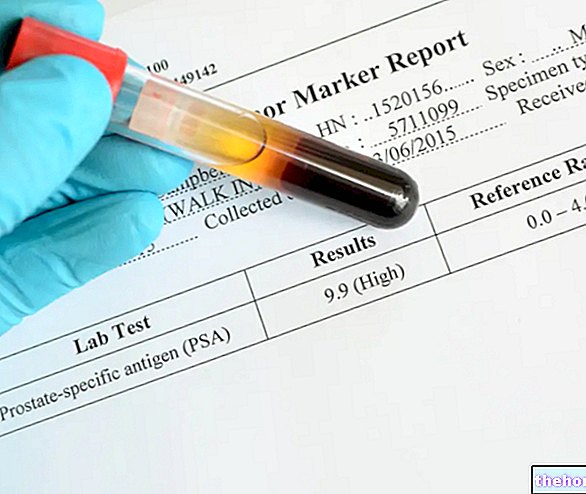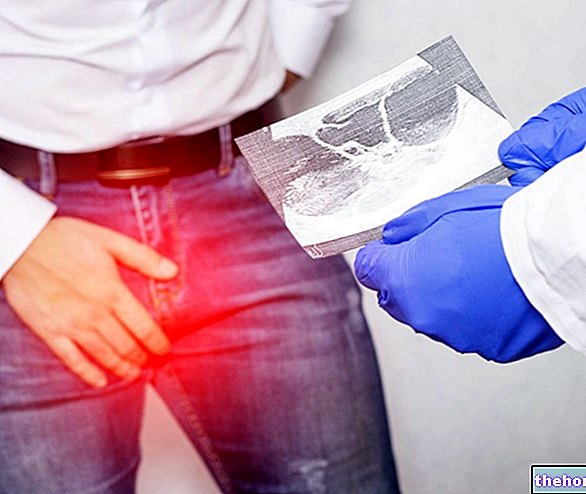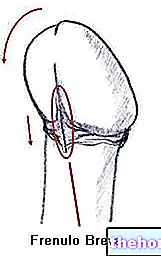
Left testicle pain recognizes numerous causes; among these causes, the most important are: varicocele, scrotal trauma, hydrocele, orchitis, epididymitis, epididymal cyst, testicular torsion and testicular cancer.
Left testicular pain usually occurs in association with other symptoms, which vary in relation to the causative factor.
Treatment of left testicle pain involves identifying the cause of the painful sensation itself and treating it.
What is the Testicle: a brief review of Anatomy

Shutterstock
To fully understand the content of this article, it is necessary to review in broad terms what the testicles consist of.
- Cardinal element of the male genital apparatus, the testicle is the glandular organ that covers the function of the male gonad; the testicles, in fact, have the important task of secreting male sex hormones (eg testosterone) and producing spermatozoa.
- Contained in the scrotum and ovoid in shape, each testicle is structurally made up of Leydig cells (responsible for hormonal production), the seminiferous tubules (responsible for the production of spermatozoa) and the canals of the rete testis (responsible for transporting spermatozoa to the nearby epididymis) .
- Finely perfused, each testicle is connected to a structure called the epididymis, which serves for the maturation of spermatozoa.
Before continuing with the various insights, it should be noted that the aforementioned conditions do not always cause pain in the left testicle; this is the case, for example, of varicocele and epididymal cyst.
Less common causes of left testicular pain are: kidney stones, inguinal hernia, Fournier's gangrene and prostatitis.
Varicocele

Varicocele is the abnormal dilation of the veins located inside the scrotum and used to drain oxygen-poor blood from the testicles.
Varicocele is mostly an idiopathic condition, that is, it arises due to factors that cannot be defined and recognized; in rare circumstances, however, it may also be a secondary condition to tumors with an abdominal or pelvic site.
Thanks to the anatomical differences present between the venous network that drains the left testicle and the venous network that drains the right testicle, varicocele affects the left testicle more frequently.
How common is varicocele?
Varicocele is a very common condition; according to recent estimates, in fact, one man out of 8 would suffer from it and would affect about 15% of the adult male population.
Trauma in the scrotal area
Traumas in the scrotum are violent blows directed at the scrotum and its internal contents, including the testicles.
In general, the traumas in the scrotal seat concern the protagonists of heated scuffles or road accidents, those who practice contact sports and those who are addicted to horse riding.
Hydrocele

In medicine, the term "hydrocele" describes an abnormal accumulation of clear fluid in the scrotum, all around one or both testicles.
There are two types of hydrocele: congenital hydrocele and acquired hydrocele.
Typical of newborns, congenital hydrocele is the result of the non-closure, in prenatal age, of the duct which joins the abdomen to the scrotum (peritoneo-vaginal duct) and which allows the testicles to descend into the scrotal sac; characteristic of adult men over forty, however, acquired hydrocele is a possible consequence of:
- The anomalous reopening of the peritoneo-vaginal duct;
- Inflammation of the scrotum or testicles, secondary to trauma or infection (eg tuberculosis or syphilis);
- The presence of an "obstruction along the spermatic cord (it is the even canal that receives the blood vessels and nerves having relations with the ipsilateral testicle);
- The inguinal hernia operation (in these situations, the hydrocele represents a complication of the surgery).
How common is the hydrocele?
According to some statistical studies, neonatal hydrocele has a frequency between 1 and 10 cases per 100 births.
Orchitis and Epididymitis
Orchitis is inflammation of one or both testes, while epididymitis is inflammation of one or both epididymis.
Both orchitis and epididymitis generally result from a urinary tract infection or sexually transmitted infectious disease.
Sometimes, orchitis and epididymitis can occur at the same time: in these cases, we speak of epididymitis-orchitis.
Who is most at risk for orchitis or epididymitis?
According to various statistical studies, men between the ages of 15 and 30 and men over the age of 60 develop more frequently orchitis or epididymitis.
Epididymal cyst
Also known as spermatocele, the epididymal cyst is a fluid-filled sac, of variable size, which forms close to the head of the epididymis or one of the channels making up the rete testis of the testis.
A benign condition (it is therefore not a malignant tumor), the epididymal cyst can appear following a trauma to the scrotum, an epididymitis or vasectomy, or it can also be the result of a spontaneous event from undecipherable causes (idiopathic spermatocele).
How common is the epididymal cyst?
The epididymal cyst is a fairly common condition; according to reliable statistics, in fact, about 30% of the adult male population is affected at least once in their life.
Testicular torsion
"Testicular torsion" is the medical term used to indicate the twisting of the spermatic cord and the consequent rotation, around its axis, of the connected testicle.
Episodes of testicular torsion represent medical emergencies to be treated as quickly as possible; a delay in treatment, in fact, can have unpleasant consequences: above all, testicular atrophy (or testicular atrophy).
Testicular torsion can affect males of any age, however it is more common among infants and adolescents.
How common is testicular torsion and who is most affected?
More common in young males (especially those aged between 12 and 18 years), testicular torsion seems to have an annual frequency of approximately 1 case for every 15,000 men considered in the male population under 25 years of age.
Testicular Cancer
Testicular cancer is a malignant neoplasm of the male genital system, which originates from the uncontrolled proliferation of one of the cells making up the testicles.
Currently, the precise causes of testicular cancer are unknown; the scientific evidence on the subject, however, suggests that factors such as:
- Cryptorchidism;
- Family history of testicular cancer
- Infertility;
- Cigarette smoke;
- Belonging to the Caucasian population (synonymous with white complexion) and young age;
- Exposure to chemicals such as pesticides, polychlorinated biphenyls and phthalates.
How common is testicular cancer and who does it affect most frequently?
Testicular cancer is an uncommon condition; according to a statistic covering the years from 2012 to 2016, in fact, it would affect between 5 and 6 men per 100,000 annually.
Testicular cancer accounts for 1% of all malignant tumors that the male population can suffer from.
Testicular cancer is a malignant neoplasm more common in the male population aged between 15 and 44 years.
Left Testicle Pain: When to Worry?
Pain in the left testicle is a symptom that should concern and prompt the affected person to see a doctor when:
- It is acute and appears suddenly;
- It is accompanied by the presence, on the testicle itself, of a palpable protuberance;
- It is associated with symptoms, such as fever, general malaise, swelling, redness, nausea, vomiting and abdominal pain;
- It is associated with infertility.
It should be remembered that, in the absence of timely treatment, conditions responsible for pain in the left testicle, such as testicular cancer, testicular torsion, orchitis, epididymitis and the most serious forms of varicocele, can lead to complications with significant implications. for the patient's health.
Left Testicle Pain: Who to Turn to?
When you suffer from pain in the left testicle, the reference medical figure is the urologist or the andrologist.
, the physical examination and the collection of associated symptoms; these three investigations, in fact, provide the attending physician with fundamental information to hypothesize the origin of the pain and to establish with which other diagnostic studies to continue the research.Among the tests that complete the identification of the causes of pain in the left testicle, there are:
- The scrotal ultrasound;
- The blood test;
- The urinalysis;
- Testicular biopsy.









.jpg)


















